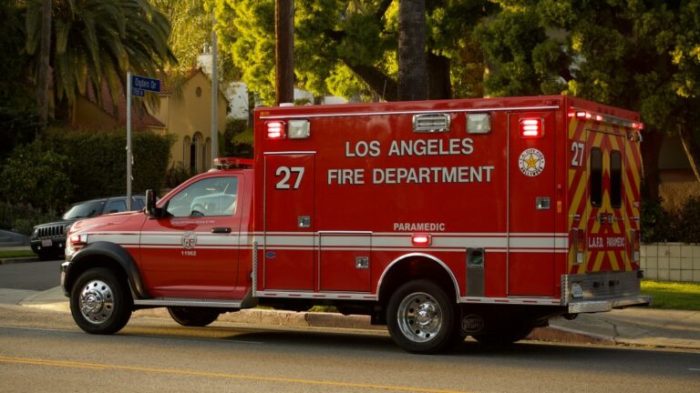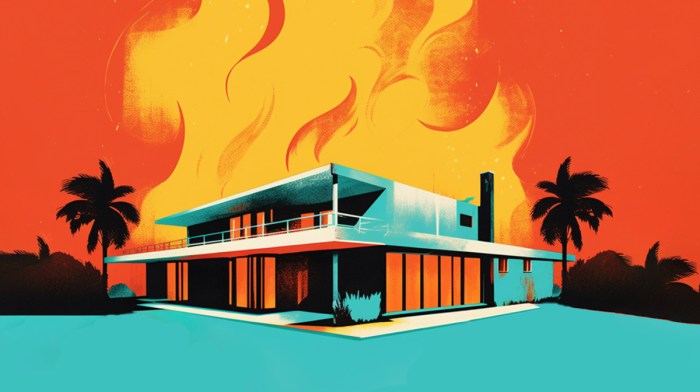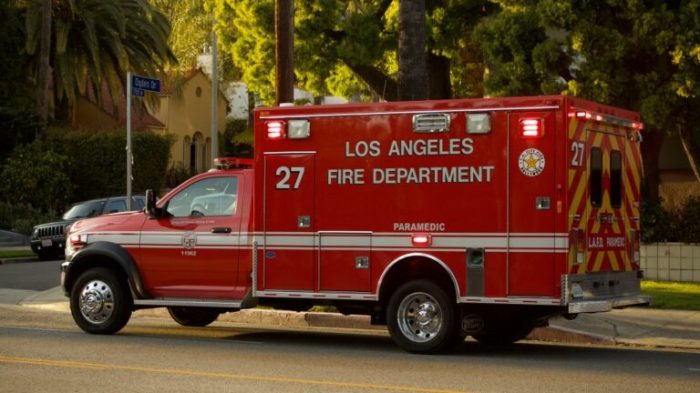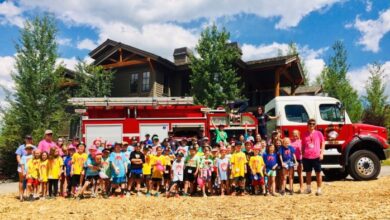
Los Angeles fires insurance is crucial for residents in a region highly susceptible to wildfires. This guide delves into the complexities of wildfire insurance in the LA area, exploring the specific challenges, costs, and coverage options available. From understanding policy specifics to evaluating different insurance providers, we’ll equip you with the knowledge to navigate this critical aspect of homeownership in a fire-prone environment.
We’ll cover everything from the basics of coverage to the factors influencing premiums, helping you understand the nuances of wildfire insurance in Los Angeles. This comprehensive overview examines the various types of policies, potential exclusions, and the claims process. Plus, we’ll compare LA’s wildfire insurance landscape to other regions, offering valuable insights and comparisons.
Introduction to Los Angeles Fires Insurance
Wildfires are a significant threat to the Los Angeles area, impacting property values and necessitating robust insurance coverage. The region’s unique geography, coupled with a history of severe fire seasons, creates a complex and challenging insurance market. Understanding the nuances of wildfire insurance in Los Angeles is crucial for residents and businesses alike.The insurance market in Los Angeles, particularly for wildfire risks, is highly competitive.
Insurers assess individual properties’ vulnerability to fire hazards, employing advanced modeling and risk analysis to determine appropriate premiums. Many insurers have stringent criteria for coverage, and premiums are often adjusted based on the property’s location, construction materials, and fire-prevention measures implemented.
Challenges and Risks Associated with Wildfire Insurance
Wildfire insurance in Los Angeles faces unique challenges. High fire risk zones, often characterized by dense vegetation and proximity to canyons or dry brush, present significant challenges for insurers. The unpredictability of wildfire behavior, coupled with the rapid spread of flames, complicates claims assessment and payouts. Property owners in these areas often face higher premiums, potentially making coverage inaccessible or prohibitively expensive.
Another challenge is the increasing frequency and intensity of wildfires due to climate change. This factor is influencing premium adjustments and coverage limitations.
Factors Influencing the Cost of Fire Insurance
Several factors contribute to the cost of wildfire insurance in Los Angeles. These include the property’s proximity to known fire hazards, such as canyons or areas with a history of wildfires. The construction materials of the home, the presence of fire-resistant features, and the implementation of preventative measures also influence the cost. Insurers also consider the specific design of the home and its surrounding landscaping.
Additionally, the overall risk profile of the region plays a crucial role, considering the frequency and severity of wildfires. For example, properties in areas with high historical wildfire activity are likely to have higher premiums compared to those in less prone regions.
Comparison of Wildfire Insurance Policies
Different wildfire insurance policies offer varying levels of coverage and benefits. Understanding the nuances between policies is essential to securing appropriate protection.
| Policy Type | Coverage Details | Potential Limitations |
|---|---|---|
| Standard Fire Insurance | Provides basic coverage for fire damage, but often excludes wildfire damage specifically. | Limited coverage for wildfire damage. May require separate endorsements for wildfire protection. |
| Wildfire-Specific Policies | Explicitly designed to cover damage from wildfires. May offer higher coverage limits and broader protection. | Premiums may be significantly higher compared to standard policies. Coverage terms and conditions vary widely between providers. |
| Enhanced Wildfire Policies | Offer comprehensive protection against wildfire damage, including coverage for rebuilding or replacement costs. | Premiums are typically the highest. Policy exclusions may apply to certain types of damage. |
Understanding the nuances between these policy types will aid in selecting the most suitable coverage for individual needs. Policy exclusions and limitations should be carefully reviewed before purchasing a policy.
Understanding Fire Insurance Coverage in Los Angeles

Navigating the complexities of wildfire insurance in Los Angeles requires a deep understanding of the coverage specifics. This region’s unique vulnerability to wildfires necessitates a thorough knowledge of policy details to ensure adequate protection. While comprehensive coverage is crucial, understanding the exclusions and limitations, the types of property damage covered, and the role of deductibles and policy limits is equally important for making informed decisions.Understanding wildfire insurance in Los Angeles means recognizing that policies are not one-size-fits-all.
Specific exclusions and limitations are crucial to anticipate potential gaps in coverage. Different policy types may have varying levels of protection, and the extent of coverage depends heavily on the terms of your individual policy.
Common Exclusions and Limitations
Wildfire insurance policies often contain exclusions for pre-existing conditions. For example, if a home’s foundation was weakened by a previous earthquake, this pre-existing condition might not be covered if a wildfire later damages the structure. Similarly, damage caused by negligence, such as failing to maintain adequate fire safety measures, may also be excluded. Also, policies frequently exclude damage from certain events that aren’t directly related to the wildfire itself, such as flooding caused by the fire’s aftermath.
It’s essential to read the fine print of your policy to understand the full extent of exclusions.
Types of Property Damage Covered
Wildfire insurance in Los Angeles generally covers direct damage to the dwelling, including the structure itself, and its contents. This coverage extends to replacement costs, rather than just the depreciated value of the property. Additionally, policies often include coverage for personal property, such as furniture, clothing, and other belongings, destroyed or damaged during the fire. Some policies may also cover additional living expenses if you’re displaced due to the fire.
It’s essential to understand what specific items are covered and what their maximum coverage amount is.
Deductibles and Policy Limits
Deductibles and policy limits are critical aspects of any insurance policy, particularly in wildfire coverage. A deductible is the amount you pay out-of-pocket before the insurance company starts paying. A higher deductible typically translates to lower premiums. Policy limits, on the other hand, set the maximum amount the insurance company will pay for a covered loss. It’s essential to carefully consider the balance between the deductible and the policy limit, considering your financial situation and potential risk exposure.
For example, a homeowner with significant assets might consider a higher deductible and a corresponding higher policy limit. Alternatively, someone with limited assets might choose a lower deductible and a correspondingly lower policy limit.
Endorsements and Add-ons
Several endorsements and add-ons are available to customize wildfire insurance policies in Los Angeles. These add-ons can enhance coverage for specific risks or needs. The table below Artikels some common endorsements and add-ons.
| Endorsement/Add-on | Description |
|---|---|
| Earthquake Protection | Provides coverage for earthquake damage, often a separate endorsement. |
| Flood Protection | Provides coverage for flood damage, typically a separate endorsement, separate from wildfire coverage. |
| Additional Living Expenses | Covers costs associated with temporary housing and other living expenses if you’re displaced due to a wildfire. |
| Business Interruption | Covers business losses incurred due to disruptions caused by a wildfire. |
| Personal Liability | Covers legal liability for injuries or property damage caused by your actions. |
Factors Affecting Fire Insurance Premiums in Los Angeles

Understanding the factors influencing fire insurance premiums in Los Angeles is crucial for homeowners to make informed decisions. These factors, beyond the basic coverage, play a significant role in determining the cost of your policy. Premiums aren’t static; they are dynamic and influenced by a variety of circumstances specific to your location and property.Geographic location, building characteristics, and claims history are among the key determinants.
A deeper understanding of these factors empowers homeowners to proactively mitigate risks and potentially secure more favorable insurance rates.
Impact of Geographic Location on Wildfire Insurance Costs
Geographic location significantly impacts wildfire insurance costs in Los Angeles. Areas closer to known wildfire risk zones, such as canyons or hillsides, face higher premiums due to the increased likelihood of damage from wildfires. These areas often experience stronger winds and drier vegetation, creating conditions conducive to fire spread. For instance, properties situated near the Angeles National Forest often have higher premiums compared to those located further away.
Proximity to dry brush, high-risk vegetation, and established fire patterns are all considerations.
Role of Building Materials and Construction Standards in Wildfire Insurance Premiums, Los angeles fires insurance
The materials used in construction and adherence to specific construction standards directly influence wildfire insurance premiums. Homes built with fire-resistant materials, such as stucco or concrete, generally qualify for lower premiums than those constructed with combustible materials like wood. Compliance with local building codes, which often incorporate fire-resistant design principles, is also a significant factor. For example, a home with a non-fire-resistant roof or exterior cladding might see higher premiums, whereas a home with a fire-resistant roof and exterior cladding will see a lower premium.
These factors are crucial for property owners in fire-prone areas to minimize risks and lower their insurance costs.
Comparison of the Effect of Past Wildfire Claims on Future Insurance Premiums
A history of wildfire claims in a specific area significantly affects future insurance premiums. Areas with a higher frequency of wildfire damage tend to have higher premiums, as insurers must factor in the elevated risk of future claims. The severity of past claims also plays a role, with more extensive damage leading to higher premiums. For instance, a neighborhood with a history of major wildfire damage will likely have higher premiums than a neighborhood with a similar risk profile but fewer claims.
Insurers consider the number and severity of past events to adjust their risk assessments.
Navigating the complexities of LA fires insurance can be tricky, especially after a devastating event. While insurers grapple with the financial impact of these recent fires, the global political landscape is also presenting challenges. The US revoking visas for South Sudanese citizens due to a civil war threatening to spill over into the US homeland, as detailed in this article , highlights the interconnectedness of global issues.
Ultimately, securing the right LA fires insurance remains crucial for protecting property and families.
Table Demonstrating the Relationship Between Home Features and Wildfire Insurance Costs
| Home Feature | Impact on Wildfire Insurance Costs |
|---|---|
| Fire-resistant roofing material (e.g., tile, metal) | Lower premiums |
| Combustible roofing material (e.g., asphalt shingles) | Higher premiums |
| Fire-resistant exterior cladding (e.g., stucco, concrete) | Lower premiums |
| Combustible exterior cladding (e.g., wood siding) | Higher premiums |
| Sprinkler system | Potential for lower premiums (depending on the extent and design) |
| Fire-resistant landscaping | Potential for lower premiums (depending on the design and extent) |
| Proximity to wildfire risk zones | Higher premiums |
| History of wildfire claims in the area | Higher premiums |
Claims Process and Considerations for Los Angeles Fire Insurance
Navigating the aftermath of a wildfire is incredibly stressful, and securing compensation through your insurance policy can be a crucial step in rebuilding. Understanding the claims process, timelines, and essential documentation is key to a smoother and more effective recovery. This guide will Artikel the steps involved in filing a claim, the typical timeframe for processing, and the importance of proper documentation, along with how to approach a denied claim.The insurance claim process can feel daunting, but by understanding the steps and the importance of meticulous documentation, you can navigate the process more effectively.
This information is provided for educational purposes only and does not constitute professional advice. Consult with a qualified insurance professional for personalized guidance.
Filing a Wildfire Insurance Claim in Los Angeles
Filing a claim involves several steps, starting with promptly notifying your insurance company. This typically involves contacting your insurer directly, providing them with essential information, and possibly reporting the claim to the relevant authorities.
- Initial Notification: Immediately contact your insurance company to report the fire damage. Provide details about the incident, including the date, time, location, and any other relevant information.
- Gathering Documentation: Assemble all necessary documents, such as your insurance policy, proof of ownership, photos of the damage, and any receipts for pre-existing repairs or improvements.
- Property Inspection: The insurance company may send an adjuster to inspect the damage. This is a critical step to assess the extent of the loss and the costs of repair or replacement.
- Claim Submission: Complete the necessary claim forms and provide supporting documentation to the insurer. This often includes detailed descriptions of the damage, supporting evidence, and repair estimates.
Typical Timeframe for Processing Wildfire Insurance Claims
The time it takes to process a wildfire insurance claim can vary greatly, depending on the complexity of the damage and the insurer’s procedures. Factors like the volume of claims during a disaster event can also affect processing times. It’s crucial to understand that there isn’t a standard timeframe, and it’s essential to be patient and proactive in communicating with your insurance provider.
- Initial Assessment: Expect a response within a few days to a week after filing the claim, acknowledging receipt and initiating the assessment process.
- Adjuster’s Report: The adjuster’s report, detailing the damage assessment and cost estimates, typically takes several weeks. This period may extend further if extensive damage is involved or if complex issues need investigation.
- Approval or Denial: Once the adjuster’s report is finalized, the insurance company will evaluate the claim and either approve or deny it. This process can take several weeks to several months, depending on the specific circumstances.
Importance of Documentation in Wildfire Insurance Claims
Thorough documentation is paramount in wildfire insurance claims. Detailed photographic evidence, repair estimates, and receipts are crucial in supporting the claim and ensuring fair compensation.
- Photos and Videos: Document the extent of damage with detailed photos and videos. These visual records provide concrete evidence of the damage and help the adjuster understand the situation better.
- Repair Estimates: Obtain estimates from reputable contractors for the necessary repairs. These estimates serve as proof of the cost of restoration and rebuilding.
- Receipts and Bills: Keep copies of all receipts, bills, and other documentation related to the property, such as pre-fire maintenance records, improvements, or existing repairs.
Appealing a Denied Wildfire Insurance Claim
If your claim is denied, you have options. Understand the reasons for denial and gather further evidence to support your case.
- Review the Denial Letter: Carefully review the denial letter to understand the reasons for the rejection. This will guide your next steps in gathering additional documentation or evidence.
- Gather Additional Evidence: If the denial is based on insufficient evidence, gather more supporting documentation, such as additional photos, expert testimonies, or reports.
- Negotiate with the Insurer: Contact the insurance company and discuss your concerns. Negotiation may lead to a revised settlement or a reconsideration of the claim.
- Seek Legal Counsel: If negotiations are unsuccessful, consider consulting with an attorney specializing in insurance claims to explore further legal options.
Comparison with Other Wildfire-Prone Regions: Los Angeles Fires Insurance
Wildfires are a devastating reality for many regions, but the specifics of wildfire insurance can vary significantly based on factors like local climate, regulatory frameworks, and the frequency of these events. Understanding how Los Angeles’ wildfire insurance compares to other areas is crucial for homeowners and businesses seeking appropriate protection.Comparing wildfire insurance costs and coverage across different regions is complex, as factors like the severity of past wildfires, the likelihood of future events, and the level of government support all play a role.
Navigating the complexities of LA fire insurance can feel overwhelming, like battling a raging inferno yourself. It’s easy to feel like an imposter when facing the sheer volume of options and the high costs. That’s where the pressures of financial security in the face of disaster intersect with psychological challenges, and an essay like this one on imposter syndrome as a systemic issue imposter syndrome systemic issue essay can offer helpful context.
Ultimately, understanding the broader issues around insurance, especially in a region like Los Angeles, can be just as critical as the specific policies themselves.
Insurance premiums and coverage aren’t simply a matter of a single, standardized rate; they reflect the unique risk profiles of each area.
Wildfire Insurance Costs in Different Regions
Comparing wildfire insurance costs across regions requires a nuanced approach. Premiums are influenced by factors such as the historical frequency and intensity of wildfires, the proximity to fire-prone areas, and the presence of protective measures like firebreaks or defensible space. For instance, areas with a history of frequent, large-scale wildfires will generally have higher premiums compared to areas with a lower risk profile.
Coverage Variations Across Regions
The types of coverage available for wildfire damage can differ substantially between regions. Some areas might offer more comprehensive coverage for structures, while others may emphasize rebuilding assistance or cover specific types of vegetation. The specific types of structures or improvements, like those made to make a home more resistant to wildfire, can also influence the type of coverage provided.
Navigating the complexities of Los Angeles fires insurance can be tricky, especially with the recent rise in wildfire activity. While the world watches the German political landscape, with the recent election of Friedrich Merz as their new leader germany election winner friedrich merz , it’s important to stay informed about your insurance options and what coverage you need.
Understanding the specific needs of your property and location remains crucial in this ever-changing insurance market.
Regulatory Frameworks and Insurance Landscape
The regulatory environment plays a critical role in shaping the wildfire insurance landscape. State regulations, local ordinances, and the availability of government programs can influence the cost and scope of wildfire insurance policies. California, with its high concentration of wildfire-prone areas, has developed a more robust set of regulations to address the unique risks.
Comparative Analysis of Wildfire Insurance Across California Regions
| Region | Wildfire Frequency | Insurance Premiums (Estimated) | Coverage for Structures | Coverage for Vegetation | Regulatory Framework |
|---|---|---|---|---|---|
| Los Angeles | High | High | Comprehensive, including rebuilding assistance | Limited, often dependent on specific policy terms | Strict regulations focusing on defensible space and fire safety measures. |
| San Diego | Moderate | Medium | Comprehensive, with increasing focus on wildfire resilience | Limited, depending on policy terms | Regulations are in place but may not be as stringent as in Los Angeles |
| Sierra Nevada Foothills | High | High | Comprehensive, with specific provisions for extreme conditions | Limited to specific policy terms | Regulations tailored to mountainous terrain and high-elevation risks |
| Central Valley | Low | Low | Standard coverage, with limited specific wildfire clauses | Generally excluded from coverage | Regulations are less focused on wildfire-specific issues |
Note: Premiums and coverage are estimations and may vary based on individual circumstances. Data is based on general trends and may not reflect specific situations.
Insurance Company Options in Los Angeles
Navigating the world of wildfire insurance in Los Angeles can feel overwhelming. With the unique challenges posed by frequent and intense wildfires, choosing the right insurance provider is crucial for protecting your home and financial well-being. Understanding the diverse landscape of insurance companies and their specific strengths and weaknesses will empower you to make an informed decision.Choosing an insurance company is more than just picking a name; it’s about aligning your needs with a company’s capabilities and reputation.
Different companies excel in different areas, from claim handling to customer service. Considering factors like financial stability, local presence, and customer reviews will help you select the best fit for your needs.
Insurance Company Reputation and Financial Stability
Evaluating the financial stability of an insurance company is paramount, especially in regions prone to natural disasters. A financially sound insurer is better equipped to handle claims and meet its obligations. Insurers with strong ratings from independent agencies, such as A.M. Best or Standard & Poor’s, generally indicate a higher level of financial security. Looking into a company’s history and claims-paying record can also provide valuable insight into their reliability.
Companies with a history of prompt and fair claims handling are a more desirable choice.
Customer Service Ratings and Reviews
Customer service plays a vital role in the overall insurance experience, particularly during a stressful event like a wildfire. Positive customer service ratings and reviews offer a glimpse into the insurer’s responsiveness and handling of policyholder concerns. Reading online reviews and testimonials from previous policyholders can reveal firsthand accounts of claim processes, communication effectiveness, and overall satisfaction levels.
Companies known for clear communication, prompt responses, and empathetic handling of claims tend to be more desirable choices.
Comparison of Insurance Providers
The Los Angeles area boasts a diverse range of insurance providers, each with unique strengths and weaknesses in wildfire insurance. The table below provides a general overview, comparing different companies based on their strengths and weaknesses for wildfire insurance. It is crucial to remember that these are general observations and individual experiences may vary. Thorough research and comparison are essential for selecting the best option.
| Insurance Provider | Strengths (Wildfire Insurance) | Weaknesses (Wildfire Insurance) |
|---|---|---|
| Company A | Strong financial rating, extensive network of adjusters in high-risk areas. Known for prompt claim processing. | Higher premiums compared to some competitors. Limited availability in certain neighborhoods. |
| Company B | Excellent customer service ratings, personalized approach to policyholder needs. Wide range of coverage options. | Relatively newer company, potentially less experience handling large-scale wildfire claims. Slightly lower financial rating. |
| Company C | Competitive premiums, robust digital platform for policy management and claim filing. Strong reputation for handling claims fairly. | Limited local presence, potentially slower response times in emergency situations. Fewer available claim adjusters in the region. |
| Company D | Local presence with deep roots in the community. Extensive experience handling wildfire claims. Personalized approach to policyholder needs. | Potentially higher premiums due to established local market presence. Less competitive in online policy options. |
Preventive Measures and Mitigation Strategies
Protecting your Los Angeles home from wildfires requires proactive measures beyond just insurance. Understanding and implementing preventative strategies can significantly reduce your risk and potentially lower your insurance premiums. This involves a combination of building practices, landscaping techniques, and preparedness planning. Taking these steps now can safeguard your property and loved ones in the face of future fire threats.
Fire-Resistant Building Materials and Design
Modern building techniques and materials play a crucial role in mitigating wildfire risks. Utilizing fire-resistant materials in construction can significantly reduce the likelihood of a structure catching fire or spreading flames. This often involves a careful selection of roofing materials, exterior cladding, and interior finishes.
- Roofing Materials: Certain roofing materials, such as metal or tile, are more resistant to heat and fire than traditional asphalt shingles. Properly installed and maintained, these materials can create a protective barrier against embers and flames.
- Exterior Cladding: Choosing fire-resistant exterior cladding, such as stucco or cement board, can help contain a fire’s spread. Regular maintenance and proper installation are crucial for optimal effectiveness.
- Interior Finishes: Interior finishes should also be considered. Using fire-retardant paints and coatings on walls and ceilings, and ensuring proper spacing between flammable materials, can limit the spread of fire within the structure.
Landscaping and Vegetation Management
Proper landscaping and vegetation management are essential for wildfire prevention. A well-maintained landscape acts as a buffer zone, preventing embers from igniting dry vegetation and spreading to the home.
- Clearing Vegetation: Removing flammable vegetation, such as dry brush, grass, and dead trees, within a defensible space around your home is paramount. A defensible space typically extends 100 feet or more from the home.
- Pruning and Trimming: Regular pruning and trimming of trees and shrubs is essential to reduce the risk of fire spread. Maintaining proper spacing between vegetation is critical, as dense foliage provides fuel for a wildfire.
- Water Features: Water features, such as ponds or sprinklers, can help create a fire break and provide a source of water to fight a fire if it approaches.
Recommendations for Wildfire Prevention by Property Type
Implementing preventative measures varies depending on the type of property. The following table Artikels specific recommendations tailored to different property types, emphasizing the importance of proactive measures.
| Property Type | Specific Recommendations |
|---|---|
| Single-Family Homes | Establish a defensible space around the home, including clearing vegetation and trimming trees. Install fire-resistant roofing and exterior materials. |
| Multi-Family Dwellings | Implement a community-wide plan for wildfire prevention, including coordinated vegetation management and early warning systems. Ensure fire-resistant building materials are used in construction. |
| Commercial Properties | Establish clear fire evacuation plans and ensure that all landscaping and building materials meet fire safety codes. Consider implementing sprinkler systems and fire suppression equipment. |
Emerging Trends in Los Angeles Wildfire Insurance
Navigating the ever-changing landscape of wildfire insurance in Los Angeles requires a keen understanding of emerging trends. These trends are shaped by the escalating frequency and intensity of wildfires, coupled with evolving climate patterns and advancements in risk assessment technology. Understanding these shifts is crucial for homeowners and businesses alike to make informed decisions about their insurance needs.Recent years have witnessed a noticeable evolution in wildfire insurance policies, often mirroring the increasing severity of wildfire events.
These changes include both enhancements in coverage and adjustments to exclusions, reflecting the growing complexity of the risk. The future of wildfire insurance will likely be significantly impacted by the continued effects of climate change, demanding proactive adaptation strategies from both insurance providers and policyholders.
Coverage Enhancements and Exclusions
Wildfire insurance policies are adapting to the more extreme conditions. Enhanced coverage often includes provisions for more comprehensive damage assessments, including smoke damage, which is increasingly a concern with larger and more widespread fires. Conversely, some policies are tightening exclusions, such as those related to pre-existing conditions or negligence in maintaining property. This trend is driven by the rising costs of insurance and the need to manage risk effectively.
Examples include exclusions for structures built in high-risk areas without proper fire-resistant materials or those failing to adhere to local building codes.
Impact of Climate Change on Future Needs
Climate change is a significant factor impacting wildfire insurance. The increasing frequency and intensity of wildfires are driving premiums higher and impacting the availability of coverage. Predicting future needs requires an understanding of projected climate scenarios. For example, rising temperatures and altered precipitation patterns are contributing to longer and more intense fire seasons, pushing the need for stronger, more resilient construction and potentially increasing the need for specialized insurance solutions.
California’s experience with record-breaking wildfires in recent years serves as a stark example of the escalating need for insurance solutions adapted to the changing climate.
Role of New Technologies in Assessing Wildfire Risk
Advanced technologies are revolutionizing wildfire risk assessment. Remote sensing data, predictive modeling, and machine learning algorithms are being used to create more accurate and detailed risk profiles for individual properties. These tools help insurers to identify high-risk areas and assess the vulnerability of structures to wildfire damage. Sophisticated mapping tools, for instance, use satellite imagery and historical fire data to identify areas most susceptible to wildfire spread, providing more precise risk assessments.
Recent Legislative Changes Impacting Wildfire Insurance
Recent legislative changes are addressing the unique challenges of wildfire insurance in California and other affected regions. These changes often involve mandates for increased transparency and fairness in pricing models, as well as efforts to enhance the availability of insurance in high-risk areas. For example, some states are enacting regulations to ensure that insurance companies provide clear and understandable information about coverage and exclusions.
Furthermore, there’s a growing movement toward incentives for property owners to implement wildfire mitigation measures, potentially leading to lower premiums for compliant homeowners.
Ultimate Conclusion
In conclusion, navigating Los Angeles fires insurance requires a thorough understanding of the unique risks and available options. This guide has provided a detailed look at the specific considerations for wildfire insurance in LA, from policy coverage to premiums and the claims process. Remember to weigh the pros and cons of different insurance providers and consider proactive measures to mitigate wildfire risks.
By understanding these factors, you can make informed decisions to protect your property and peace of mind.




